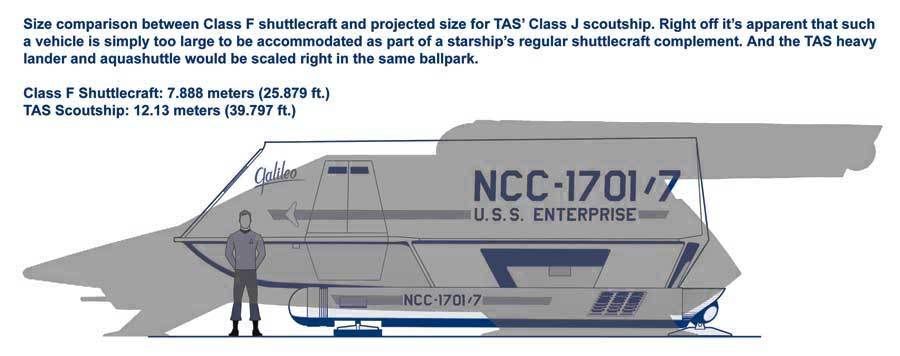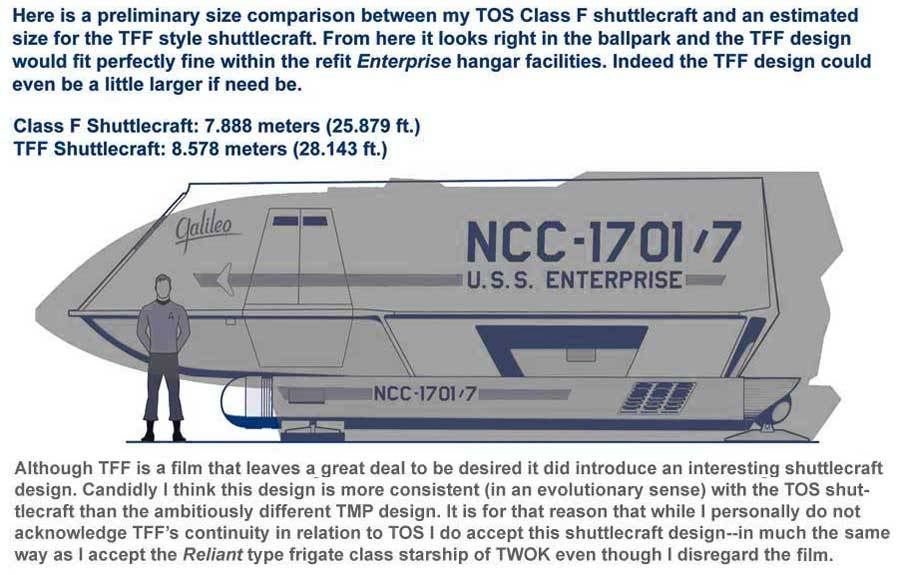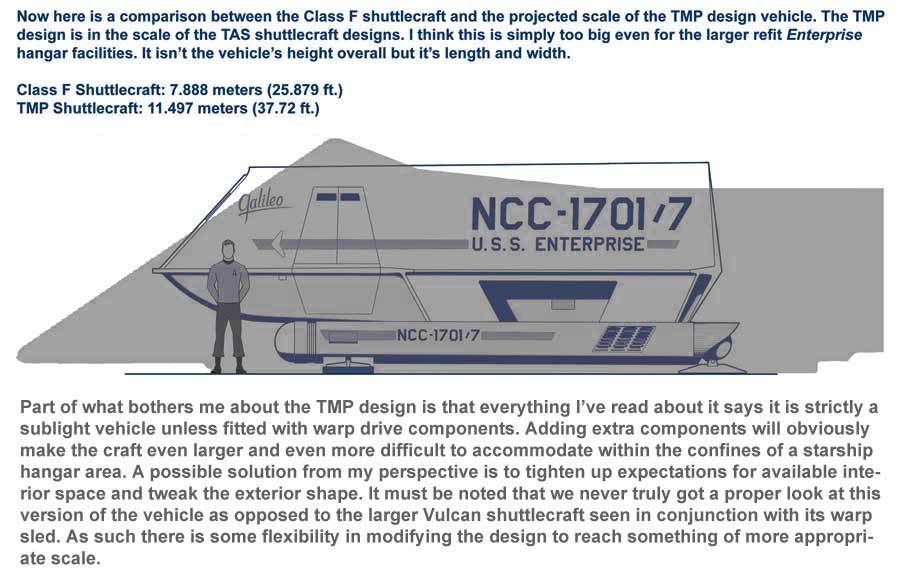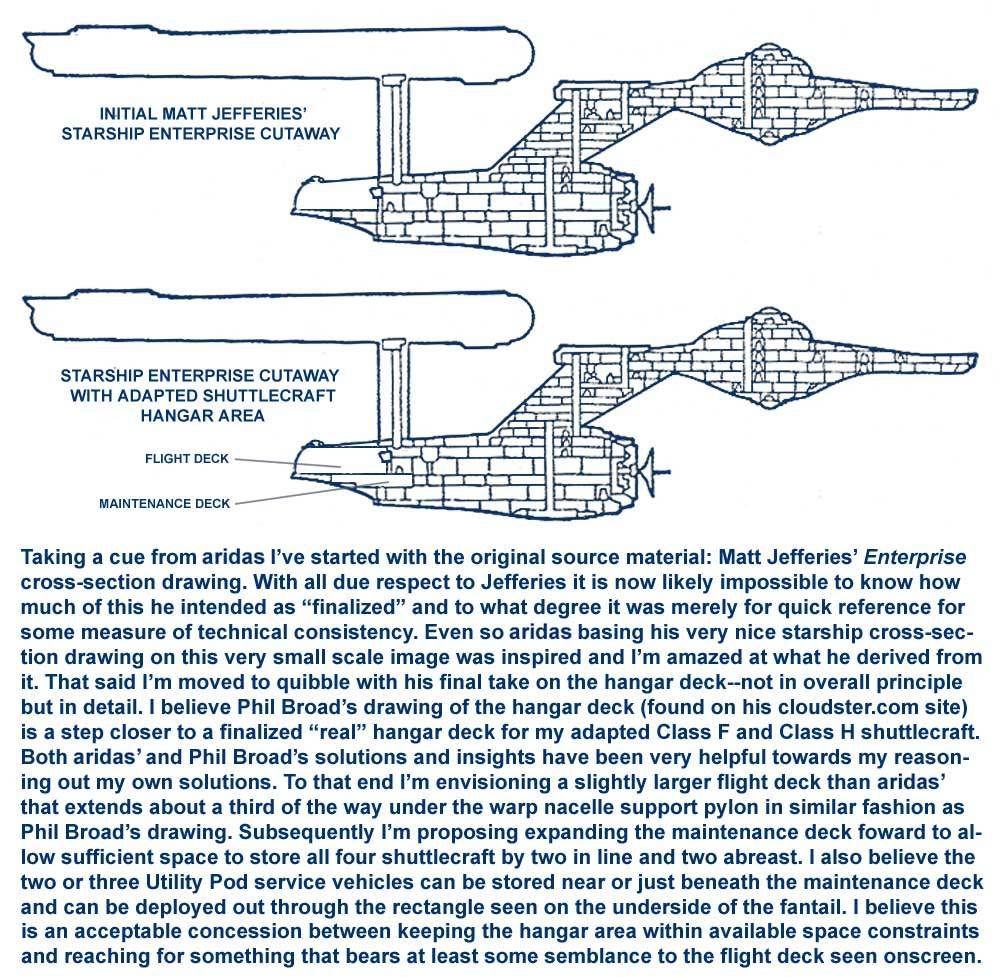^^ I believe we agree at least in principle if not in exact detail, or in this case in exact measurements. (-: I think our overall approaches will differ mainly in terms of inches or perhaps even a couple of feet here and there. Mind you having some extra space on the Flight Deck could be foreseen as useful if you have to take aboard a few extra craft in some sort of search-and-rescue operation. I'm just thinking aloud here.
I must have been overtired or something last night when I made my last post. I don’t know what I was thinking.
What I meant to say in regards to it being sometime before I tackle the hangar deck was that I still have a fair amount to do in regards to the TOS shuttlecraft before I can approach the hangar deck plans. The TAS and film shuttlecraft will follow after that.
What I have left to
complete first:
Sheet 0 – Starfleet Shuttlecraft Cover Page
Sheet 7 – Class F Shuttlecraft Port Cutaway
Sheet 8 – Class F Shuttlecraft Starboard Cutaway
Sheet 9 – Class F Shuttlecraft Bow Cutaway
Sheet 10 – Class F Shuttlecraft Aft Cutaway
Sheet 11 – Class F Shuttlecraft Deck Plan
Sheet 12 – Class F Shuttlecraft Ceiling Plan
Sheet 20 – Class H Shuttlecraft Port Cutaway
Sheet 21 – Class H Shuttlecraft Starboard Cutaway
Sheet 22 – Class H Shuttlecraft Bow Cutaway
Sheet 23 – Class H Shuttlecraft Aft Cutaway
Sheet 24 – Class H Shuttlecraft Deck Plan
Sheet 33 – Class B Utility Pod Exterior Views (Port, Bow and Top)
Sheet 34 – Class B Utility Pod Exterior Views (Starboard, Aft and Bottom)
Sheet 35 – Class E Shuttlecraft Exterior Views (Port, Bow and Top) [this is “The Cage” era shuttlecraft included here mainly for some historical perspective]
Sheet 36 – Class E Shuttlecraft Exterior Views (Starboard, Aft and Bottom)
Sheet 37 – Class E Shuttlecraft Interior Views (Port, Bow and Deck Cutaways)
And finally then:
Sheet 27 – Starship Hangar Port Cutaway
Sheet 28 – Starship Hangar Bow Cutaway
Sheet 29 – Starship Hangar Aft Cutaway
Sheet 30 – Starship Hangar Flight Deck Plan
Sheet 31 – Starship Hangar Maintenance Deck Plan
Sheet 32 – Starship Hangar Service Deck Plan (actually remains in question whether this will need to be done)
Sheet 38 – Project Background & Notes
As
aridas has mentioned earlier deck plans will have to be done to properly flesh this out. But I will add that I think it would be worthwhile doing cross sections looking both bow and aftwards to better ascertain how much room we have to play with.
I won’t be giving the pre TOS era Class E shuttlecraft quite the same in-depth treatment as my Class F and H shuttlecraft—it’s simply too much work for what is essentially a hobby. My intent is similar with the TAS and film shuttlecraft. I’m going to the limit with the TOS shuttlecraft simply because I find them the most interesting. I will still do the others with the same overall approach I’m using with the TOS vehicles, but I just can’t see myself agonizing over the between-the-hulls details to the same extent with the latter day craft.
My plans for the other shuttlecraft are essentially:
Sheet 1 – Shuttlecraft Port Elevation
Sheet 2 – Shuttlecraft Starboard Elevation
Sheet 3 – Shuttlecraft Bow Elevation
Sheet 4 – Shuttlecraft Aft Elevation
Sheet 5 – Shuttlecraft Top Plan
Sheet 6 – Shuttlecraft Bottom Plan
Sheet 7 – Shuttlecraft Port Cutaway
Sheet 8 – Shuttlecraft Deck Plan
Sheet 9 – Shuttlecraft History & Specifications
Even so all told I will still end up doing something between 90 and 100 pages of drawings to cover all the main TOS, TAS and film shuttlecraft compiled over three volumes of
Starfleet Shuttlecraft. It should still be rather comprehensive even though I’m not going into every little detail and leaving s
omething to the imagination. (-:
I question whether anyone has ever gone into this level of detail before in regards to a fictional creation, but who really knows.










